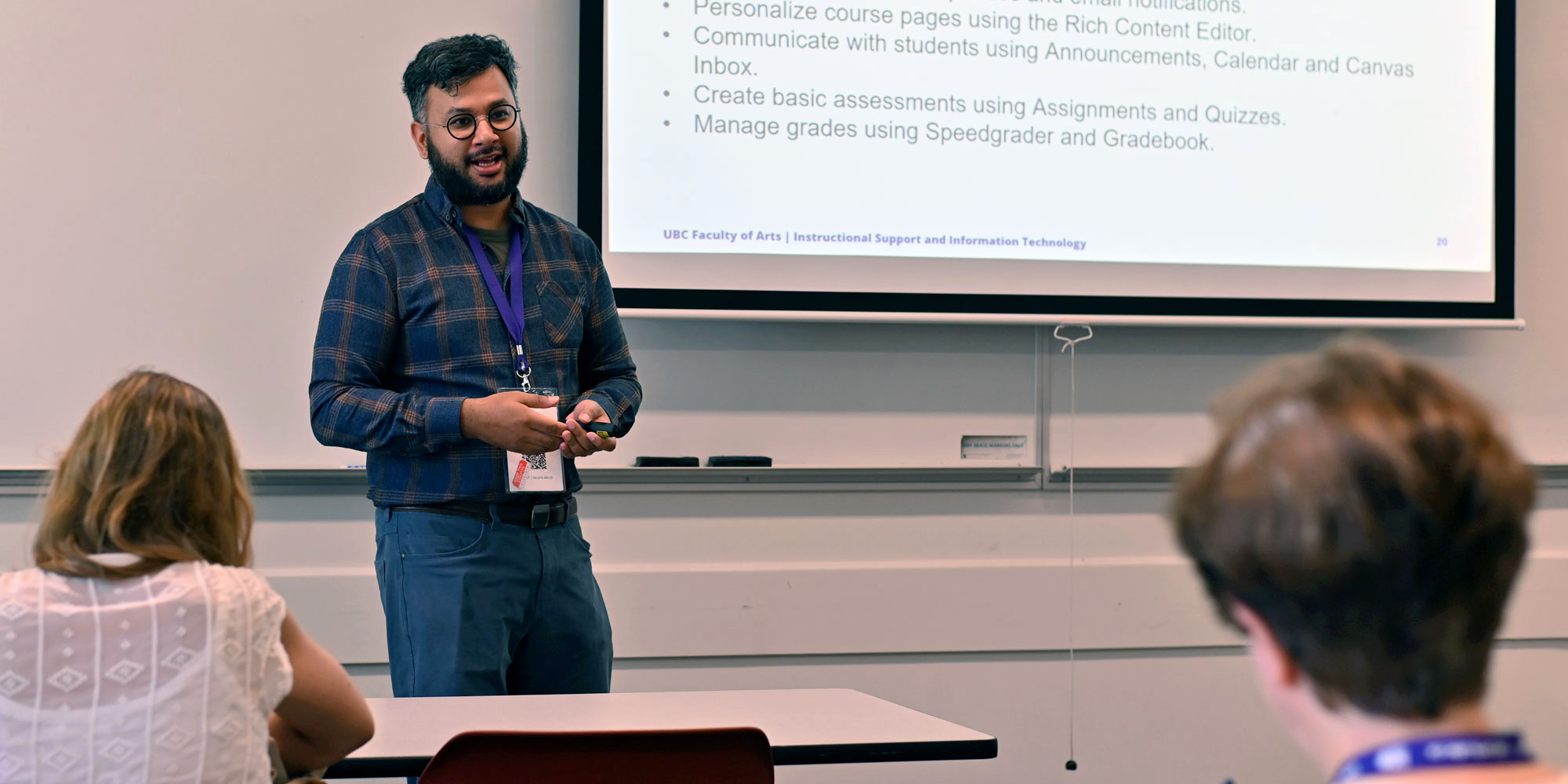Capture and share your knowledge through video to add flexibility to your course.
The use of videos in your course can be an effective way to enrich student learning. Videos can spark discussions, supplement key concepts, provide real-life examples, demonstrate problem-solving or bring in the views of outside experts. You can use video to add flexibility to your course, increasing class time for interactive activities and allowing for personalized learning around online video material.
Get started
Start with an idea
What do I want to do and why?
Identify an approach
How do I want to do it? Think about the video format and the presentation style to communicate your idea.
Find resources
What do I need to help me? Explore the resources available, your timeframe, and the additional content you plan to include.
Choose tools and evaluate budget
What should I use? Choose the tools you want to use and evaluate the time required to learn the technology and any costs involved.
Ideas to implement videos in your teaching
Identify key learning goals or areas where students have difficulty understanding and create short mini-lectures to support students. These can be used for flipped classroom applications (with active learning or clickers in class to review and extend video content) or for independent student review.
Provide a space for students to raise questions about concepts they have difficulty understanding in class or online. Instead of explaining these questions in class, record short DIY videos to cover the topic. Collect these videos over time to create a collection of the most asked questions for students to review
Create pre-lecture videos for students to watch before attending class. This provides students with an initial exposure to the content, sparks interest, and improves students’ understanding.
Instead of providing students with an answer key to a problem, create a video (with narration) working out the solution step-by-step. To encourage students to watch the video, work out only part of the problem in the video and have students complete the rest and submit it online as an assignment or quiz.
Post your videos online and provide a space for students to comment and discuss areas where they need further clarification. This will allow student questions to be addressed in detail, especially for large classes with limited class time. This can also give instructors an idea of concepts students are struggling with and re-address misconceptions the following class as a review.
Have learners become the creators of resources for their peers. Look for opportunities where students can create videos such as recording their presentations, writing and acting out a script, explaining a concept using animation or producing field videos. This allows students to not only reinforce what they’ve learned but also a learning resource for future students.
Record interviews with experts in the discipline, providing examples and explaining concepts relevant to what is being covered in class. This enriches students’ learning by allowing them to hear what other experts say about a particular topic.
Challenges to consider
Video can be time intensive and expensive to produce. Learning how to use audio-visual equipment and editing software requires training and time. Depending on your goals, a self-learned approach may be a good start. For more advanced production needs, funding for support may be necessary.
Producing videos requires planning, filming, and post-production, all of which can be time-consuming and add to the instructor's workload. Using videos in place of lectures also means that the instructor must plan and redesign what will be done during class.
Keeping videos short enough to keep learners engaged while covering the required materials can be challenging. This requires additional decision-making about what is most important to include. You may want to consider separating the video into multiple segments with distinct topics and learning goals.
Changing the learning method may cause some students to respond negatively if they are uncertain of the purpose. You can communicate the objectives of using videos so students see them as a helpful resource, not an addition to their workload. Students are also likely to engage more with video materials that they perceive are directly connected with assessments and class activities.


